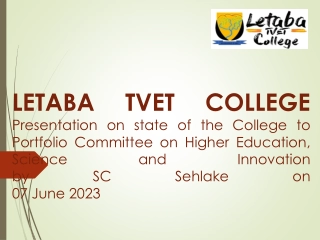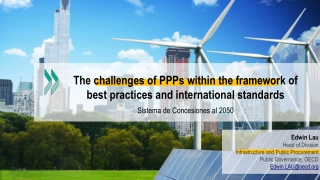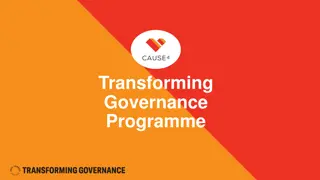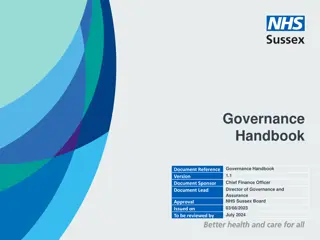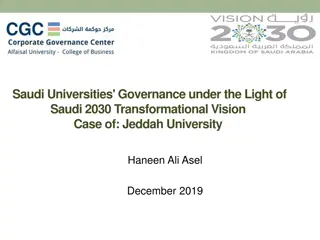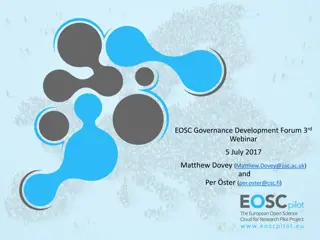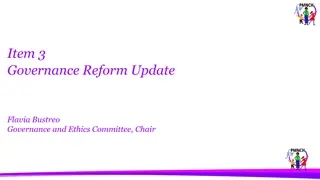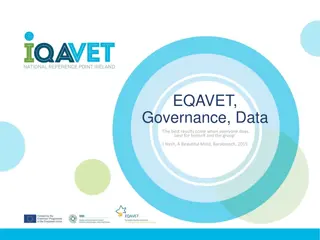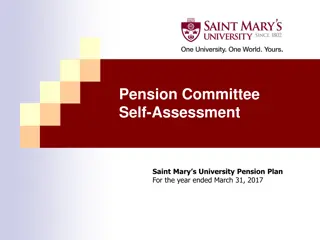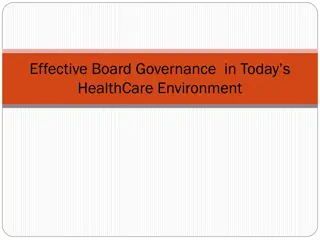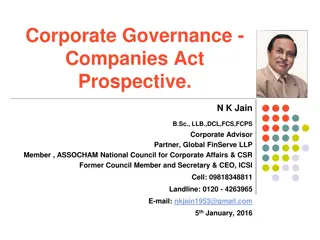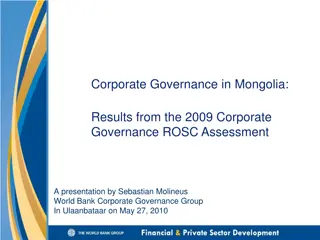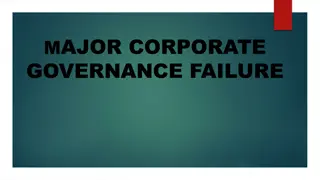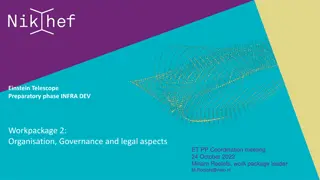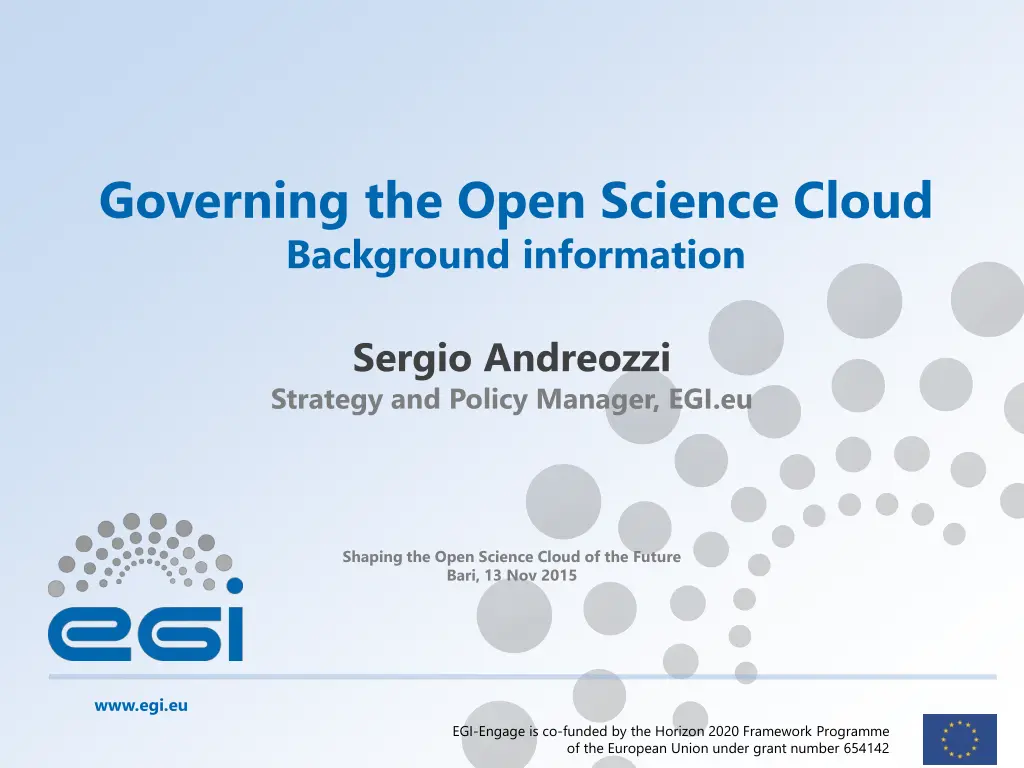
Understanding Governance in Open Science Cloud
Delve into the complexities of governing the Open Science Cloud, exploring resource management, public vs. private vs. commons approaches, and examples of governance structures. Discover how open science fosters the creation and dissemination of scholarly knowledge for various stakeholders. Explore the essential resources in the Open Science Cloud and the concept of commons for community governance. Uncover the dynamic between knowledge resources in commons versus proprietary settings, with insightful examples and dimensions for online creation communities.
Download Presentation

Please find below an Image/Link to download the presentation.
The content on the website is provided AS IS for your information and personal use only. It may not be sold, licensed, or shared on other websites without obtaining consent from the author. If you encounter any issues during the download, it is possible that the publisher has removed the file from their server.
You are allowed to download the files provided on this website for personal or commercial use, subject to the condition that they are used lawfully. All files are the property of their respective owners.
The content on the website is provided AS IS for your information and personal use only. It may not be sold, licensed, or shared on other websites without obtaining consent from the author.
E N D
Presentation Transcript
Governing the Open Science Cloud Background information Sergio Andreozzi Strategy and Policy Manager, EGI.eu Shaping the Open Science Cloud of the Future Bari, 13 Nov 2015 www.egi.eu EGI-Engage is co-funded by the Horizon 2020 Framework Programme of the European Union under grant number 654142
Outline Open Science & Open Science Cloud Complex resource management system Private vs. Public vs. Commons Example of governance structures Internet Governance PPP Questions for the panel 13/11/2015 Shaping the Open Science Cloud of the Future 2
Open Science Opening of the creation and dissemination of scholarly knowledge towards a multitude of stakeholders, from professional researchers to citizens 13/11/2015 Shaping the Open Science Cloud of the Future 3
Open Science Cloud: Complex Resource System Resources: Research data Compute/storage/network Software and tools Standards and specifications Scientific publications Educational and training Expertise IPR Digital services and applications Research Data Knowledge & Expertise Standards 13/11/2015 Shaping the Open Science Cloud of the Future 4
Commons Institutionalised community governance of the production and/or sharing of a particular type of resource (from natural to intellectual) G ANT: European Communications Commons Constructing Genome Commons Wikipedia e-Infrastructure Commons Linux Internet 13/11/2015 Shaping the Open Science Cloud of the Future 5
Knowledge resources: Commons vs. Proprietary E.g. Human Genome Project and Bermuda Principles E.g. Biological patents Source: The EU and the Commons: a Commons approach to European Knowledge policy 13/11/2015 Shaping the Open Science Cloud of the Future 6
Example: Commons dimensions for an Online Creation Community 1. Collective mission or goal of the process 2. Cultural principles and social norms 3. Design of the platform of participation 4. Conditions for self-management of contributions 5. Formal rules or policies for community interaction 6. License 7. Decision-making and conflict resolution systems 8. Infrastructure provision Source: Governing Knowledge Commons book (2014), p.288 13/11/2015 Shaping the Open Science Cloud of the Future 7
Internet Governance 13/11/2015 Shaping the Open Science Cloud of the Future 8
Internet Governance: Definition The development and application by Governments The private sector Civil society In their respective roles, of: Shared principles Norms Rules Decision-making procedures Programmes That shape the evolution and use of the Internet 13/11/2015 Shaping the Open Science Cloud of the Future 9
Internet Governance: A Multi-Stakeholder System Governments Business sector Domain-name companies, Internet Service Providers, telecommunication companies, software companies, Internet content companies Civil society WGIG (Working Groups on Internet Governance) International organisations: ITU (International Telecommunication Union), WSIS (World Summit on Information Society), UNESCO (UN Educational, Scientific and Cultural Organization), UNDP (United Nations Development Programme) The Internet community Institutions and individuals who have developed and promoted the Internet since its inception ICANN Internet Corporation for Assigned Names and Numbers 13/11/2015 Shaping the Open Science Cloud of the Future 10
Internet Governance: Layers The "physical infrastructure" layer Where the information travels The "code" or "logical" layer Controlling the infrastructure The "content" layer The information that signals through the network 13/11/2015 Shaping the Open Science Cloud of the Future 11
Internet Governance: Mix of Commons and Market Clear separation between the parts of the system subject to: private initiative and control commercial or not-for-profit global coordination and nonexclusive access Internet combines exclusive, private network facilities and services open, non-proprietary standards (Some) winning principles: End-to-end design argument Net neutrality 13/11/2015 Shaping the Open Science Cloud of the Future 12
Public-Private Partnerships (PPP) 13/11/2015 Shaping the Open Science Cloud of the Future 13
Public-Private Partnerships Public procurement arrangement between public sector world of business where risks, rewards and responsibilities are shared Often used for infrastructure projects where responsibilities are assigned for design, funding, construction, management, maintenance or operation of the infrastructure assets 13/11/2015 Shaping the Open Science Cloud of the Future 14
PPPs in Horizon 2020 Difference between IPPP and CPPP 13/11/2015 Shaping the Open Science Cloud of the Future 15
Why Public-Private Partnerships in Horizon 2020? To solve problems together with industry To strengthen European industrial leadership To facilitate prioritisation of R&I in line with the Europe 2020 objectives and industry needs To leverage research and innovation elements To strongly commit industry to joint objectives 13/11/2015 Shaping the Open Science Cloud of the Future 16
An example of cPPP on Big Data European Commission Contractual Arrangement Grant Agreement per project Association proposes research objectives EU and Industry agree on a cPPP to conduct strategic Big Data Value research and to run innovation projects Requires setting up of a Big Data Value association Involvement of a broad stakeholders community Stakeholder Community Big Data Projects within Horizon 2020 Big Data Value Association NESSI Industry driven, Defines Research and Innovation Agenda, Specifies Key Performance Indicators Projects running within 2017 2021 Expected Total Funding ~ 500 MEUR Stakeholders Industry Large Industry SME Research User 13/11/2015 Shaping the Open Science Cloud of the Future 17
Questions for the panel 1. 2. What needs to be governed in Open Science Cloud? Who has to take care of the Open Science Cloud, who should feel responsible? Who are the actors? How do you foresee options for structuring the governance of the open science cloud? What we can learn from other federated infrastructures such as the Internet? How, in what form, can we ensure the involvement and participation of the researchers and any other stakeholders to steer the evolution of the Open Science Cloud? Possible business models of the Open Science Cloud for sustainability? 3. 4. 5. 13/11/2015 Shaping the Open Science Cloud of the Future 18


